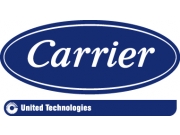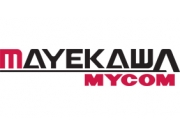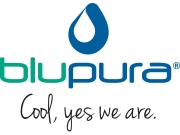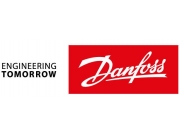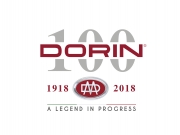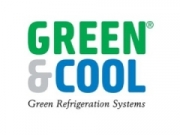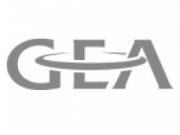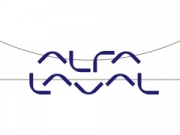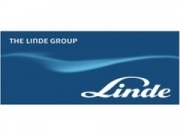Events
 |
Christian Heerup - Server room heat recovery and free cooling with CO2 and propane
PDF document
published on 11 October 2011
Free cooling is a possible solution when the temperature for the cooling load is above the outdoor temperature. To increase efficiency on a yearly basis, the objective is to raise the temperature level at which free cooling can be applied in order to achieve more hours of free cooling operation. By supplementing the traditional glycol based free cooling system with a CO2 based system, the benefits of phase transition and an increased heat transfer coefficient are utilized and the temperature limit is raised, lowering the annual energy consumption. To further reduce operating costs the heat is recovered from the server room and the canteen refrigeration system by the use of heat pumps. Calculations show a significant reduction in the energy consumption.
view presentation
 |
Gaku Shimada - High ambient energy efficient CO2 supermarket showcases
PDF document
published on 11 October 2011
CO2 is thought to provide lower system efficiency for commercial refrigeration systems when compared with R404A.The reason for this is that the cooling capacity of the gas cooler is often under estimated, with the same outlet refrigerant temperature is assumed for both the gas cooler and condenser. Sanyo’s field test results on the other hand, show that the CO2 direct expansion refrigeration system consumes less electricity than an equivalent R404A system. This is because we calculated the gas cooler capacity based on the measured gas cooler outlet temperature, after which we calculated the cycle efficiency. As a result CO2 split cycle efficiency is as same as R404A cycle when in refrigerator mode, and actually higher when in the freezer mode.
view presentation
 |
J Michael Griffin - Efficient and sustainable container refrigeration application using CO2
PDF document
published on 11 October 2011
Carrier has successfully developed and trialed a CO2 refrigerant container unit. The challenge for the transport refrigeration industry is to create a system that meets the energy consumption levels of today’s efficient HFC machines. In order for CO2 to work as a viable refrigerant today, where energy efficiency, cooling capacity, power consumption, and quick pull down are necessary starting points, components and systems that can better control capacity and temperature using CO2 should be developed. To be successful, container refrigeration equipment manufacturers must work to combine the best of these components into a carefully designed system. The goal of these new systems should be to achieve a GWP equal to one, minimize environmental impact from materials used, and improve energy efficiency at the same time.
view presentation
10-point action plan for Natural Refrigerants |
Policy session 2: New Ecodesign requirements |
 |
Daniel Colbourne - New Ecodesign Requirements
PDF document
published on 12 October 2011
Regulations developed under the Ecodesign Directive are intended to go further than just efficiency, by considering emissions of other substances and taking a lifecycle approach. However, currently the existing regulations and those under development mainly focus on efficiency. There is a big potential for advantageous requirements for naturals refrigerants in Ecodesign, provided that the industry gets involved in the process and puts forward ambitious proposals. The opening presentation for “Policy session 2: New Ecodesign requirements” also discusses the contributing factors to greenhouse gas emissions from production through to use and end-of-life of f-gas containing equipment, with the refrigerant responsible for 10 –50% of the Total Equivalent Warming Impact (TEWI). As product efficiency improves more and more, weighting of GWP of refrigerants becomes more significant. Finally Ecodesign product regulations should not be seen in isolation, as there are many interlinkages with safety and performance test standards and other regulations.
view presentation
 |
Matthew Kestner - The approach to refrigerants in existing and pending legislation
PDF document
published on 12 October 2011
The presentation provides an overview of the different refrigerant-using product groups for which Ecodesign requirements are being drawn up. Existing Ecodesign product categories represent the majority of f-gas emissions. Global Warming from f-gas emissions is typically about 10-25% of that from energy consumption. Possible Ecodesign measures regarding refrigerants are a bonus for low GWP gases (such as the bonus provided in the Ecodesign regulation for room air conditioners) and making gas tight products an essential requirement. Possible other measures that are not primarily Ecodesign responsibility include a review of safety standards on natural refrigerants and deposit schemes or taxes on high GWP gases. However policy makers have some concerns about bans/quotas on high GWP refrigerants, including whether low-GWP can efficiently do the job, and the possibility that such a ban could negatively affect industries that are in their infancy (eg heat pump industry).
view presentation
 |
Wilhelmus de Wilt - Ecodesign: How does it work and how can we take into account refrigerants?
PDF document
published on 12 October 2011
The main instruments to regulate energy efficiency of products include the Ecodesign and Energy Labelling Directives, the first one addressing the supply side and the second one the demand side. It is the combined effect of both measures which ensures a dynamic improvement of the market. Ecodesign aims to improve the environmental performance of energy-related products and harmonise “ecodesign requirements” across EU Member States. Energy labeling provides market transparency for consumers, incentives for innovation for manufacturers, market transformation towards highly efficient products/energy savings complementary to “minimum” ecodesign requirements. The presentation discusses the different steps in the Ecodesign process, which is in general a 3 year process, from preparatory studies on product groups to adoption of a regulation, and how stakeholders can get involved, the product groups for which regulations are already in place, those for which measures are under preparation and those that are planned for the near future.
view presentation
 |
Halvart Koeppen - Review of policy measures and incentives for ozone- and climate friendly technologies
PDF document
published on 12 October 2011
Koeppen discusses progress with phasing out HCFCs in 12 developing countries and 7 countries with economies in transition in Europe and Central Asia that fall within the Regional Ozone Network for Europe & Central Asia, which provides a forum for Ozone officers from the region to share knowledge. The presentation outlines the different HCFC policy measures that are in place or planned in different countries such as labeling requirements for containers, certification of refrigeration technicians, etc. It also depicts the HVAC&R industry in the different national markets, in terms of the manufacturing, existing installations of natural refrigerant plants and manufacturing facilities, the refrigerants used in heat pumps, national heat pump incentives, training & certification schemes for technicians etc. Several examples of installations in the region with natural refrigerants are provided, including an ammonia meat plant in Croatia, the roll out of hydrocarbon bottle coolers in Turkey, the conversion of showcase production plant to hydrocarbons in Armenia, an HFC/CO2 supermarket system in Turkey. Nonetheless, with no incentives for natural refrigerants and no linkages to urban planning, HFC technologies currently prevail in the region as the main HCFC replacement.
view presentation
 |
Stephane Arditi - Ecodesign and WEEE
PDF document
published on 12 October 2011
The new Ecodesign regulation for room air conditioners has set a precedent in recognising the contribution of refrigerants in the environmental footprint of products by providing a bonus in energy efficiency requirements for products using refrigerants with a Global Warming Potential (GWP) below 150. However, the measure has somewhat poor visibility, as it is not reflected on the corresponding energy label. Similar opportunities for introducing low-GWP bonuses could arise for several other refrigerant containing product categories that are currently being discussed under Ecodesign, including commercial & professional refrigeration, boilers and water heaters and tertiary air conditioning. NGOs’ preferred means of accounting for the environmental impact of refrigerants would be a progressive ban of refrigerants with GWP > 150, with the second best option being a malus on energy efficiency requirements (ie stricter efficiency requirements) for appliances using high GWP refrigerants. The Waste Electrical and Electronic Equipment (WEEE) Directive that is currently being recast and which stipulates that each producer is responsible for the end of life costs of its own products, could provide additional opportunities for promoting natural refrigerants through for example developing low GWP criteria to differentiate financial responsibility & standardization under producer responsibility schemes.
view presentation
